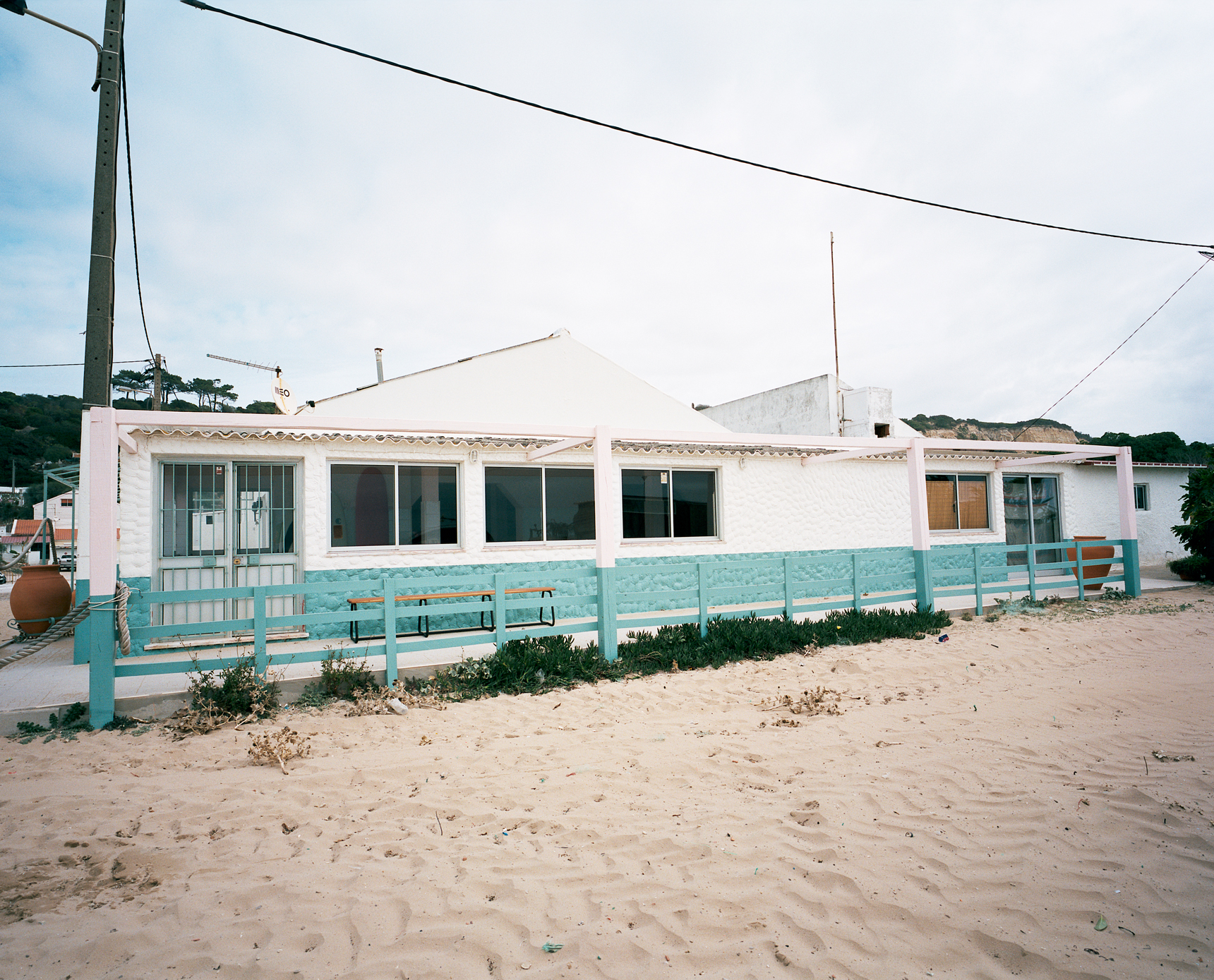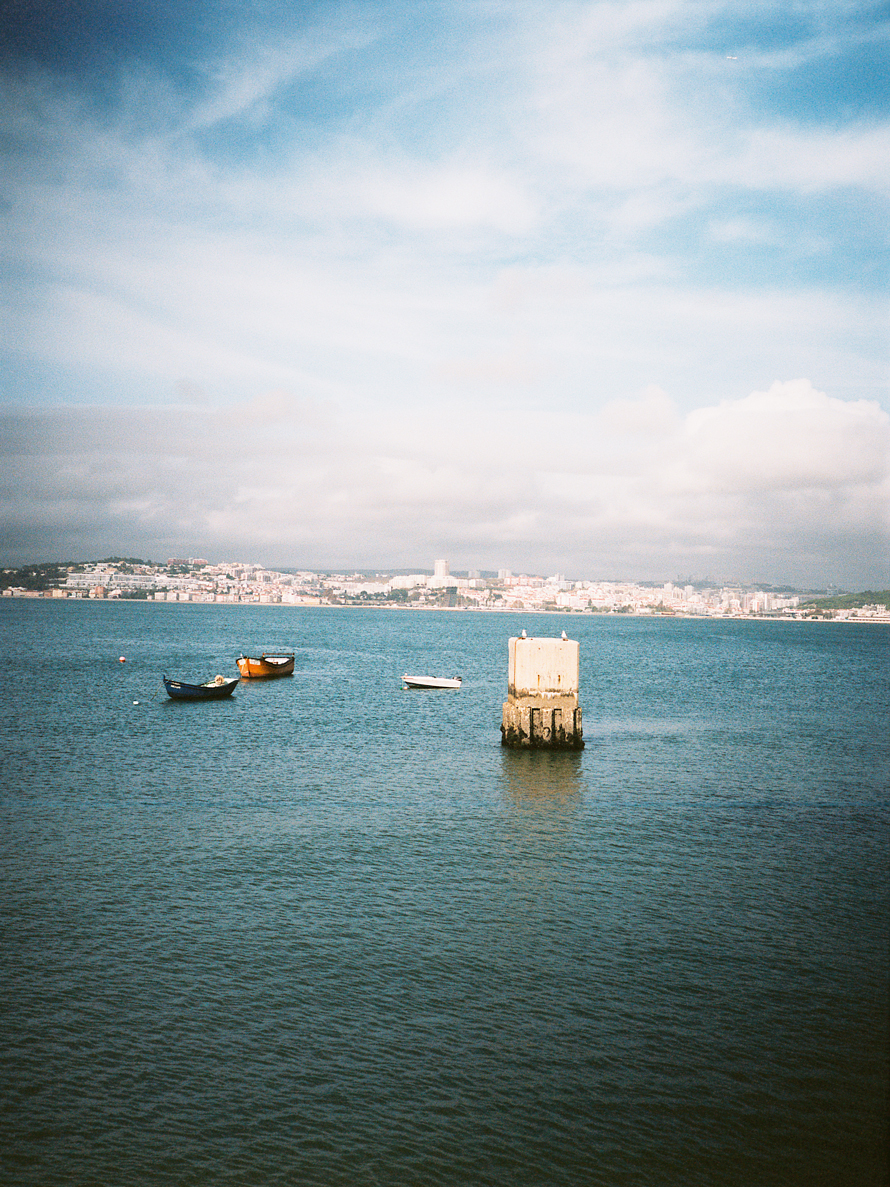Purple Magazine
— Purple 76 Index issue #29 S/S 2018
Saraiva andré
love letter from lisbon
photography by GIASCO BERTOLI
interview by OLIVIER ZAHM
translation by PEDRO RODRÍGUEZ
OLIVIER ZAHM — What’s happening in your life at present, now that you’ve traveled the world as a graffiti artist and worked on the walls of Tokyo and Copenhagen and Miami?
ANDRÉ SARAIVA — Almost all of the world’s cities, on all of the continents.
OLIVIER ZAHM — You’re suddenly spending a lot of your time and energy on a project in Portugal. What does Portugal represent for you? Is it the beginning or the end of Europe?
ANDRÉ SARAIVA — For me, practically, it’s the closest place to America. I live in New York nowadays, so it’s the easiest place in Europe to get to. Beyond that, both of my parents were Portuguese. Even though I’ve never lived there, and even though I was born in Sweden and my mother didn’t raise me to feel any nostalgia for Portugal, I spoke Portuguese with her at home. It’s not like I’m going home again, but I do have an “in” there. On the other hand, I don’t have any great admiration or nostalgia for the fallen grandeur of Portugal. My childhood memories are more tied in with Sweden. I’m a great fan of Scandinavian food, women, and objects.
OLIVIER ZAHM — What is it about Portugal that you find seductive?
ANDRÉ SARAIVA — It’s not so much Portugal as Lisbon, which is a city on the human scale, very accessible, very simple, and yet quite cosmopolitan and unpretentious, and built on the sea. Open to the world, to America.
OLIVIER ZAHM — It’s the beginning of the New World discoveries and colonizations. The Portuguese are seafarers, travelers, and very much farmers, as well.
ANDRÉ SARAIVA — I’m not sure the colonies are the greatest legacy, but they’re part of the history. By contrast with the Spanish and the Dutch, they were the only colonists to encourage mixing with local populations. Especially in Brazil.
OLIVIER ZAHM — Perhaps the country with the most mixed blood in the world.
ANDRÉ SARAIVA — Yes. And when you go to India, it’s the same. They’ve mixed with the local populations.
OLIVIER ZAHM — What draws you there besides that particular history? Have you grown tired of the great modern city? Do you feel a bit sated with urban culture?
ANDRÉ SARAIVA — I think that New York today is a hard city. There are a lot of things you need a lot of money to do. And it’s complicated because everything has to be done within the rules. It’s not very open artistically anymore. There isn’t much spontaneity left, or at least when it comes to undertaking projects. I’ve noticed this with my café Henrie and with the rent I pay for my studio. It’s complicated, It’s super-expensive. Many young, creative artists can’t afford to live in New York. In addition, today, artistic creation doesn’t need to exist in a particular place.
OLIVIER ZAHM — It doesn’t need that centrality anymore of Paris, New York, London, etc.
ANDRÉ SARAIVA — Back in the day, you needed that to communicate, meet people, dialogue, discover things that weren’t commercial or in the press. For the underground. I think that nowadays the underground can exist everywhere, through social media and technology.
OLIVIER ZAHM — And because now you can work on a beach and still keep in touch.
ANDRÉ SARAIVA — From that standpoint, then, Lisbon is a nice town. You’ve got the sea, it’s open, there’s a history to the place, it’s cosmopolitan, it’s close to America, and, above all, the people are happy for you to do new things. They leave you alone.
OLIVIER ZAHM — You’ve bought yourself a fisherman’s house on a vast working-class beach, a bit out of the way, a half-hour from Lisbon.
ANDRÉ SARAIVA — Yes. It’s a long family beach, with room enough for surfers, kitesurfers, gay cruising and nudists. And then there are the fishermen and their little restaurants, with the best fish. I’ve always loved the city and seeing people and having company, but I suddenly realized that it’s every bit as nice, and pretty good for the head and for creativity, to get out of the city — though not too far from it, either.
OLIVIER ZAHM — You’ve also got plans for a hotel on that beach, plans that might go through. You’ve already established that little café.
ANDRÉ SARAIVA — I’ve opened a café on the beach. For me, as you know, setting up a café, a hotel, or a house is like making a drawing or a painting. It’s like creating a living work of art. I put in the same intensity. It works the same way in my head. My nightclubs and cafés are ephemeral, human scale works, like my graffiti. They aren’t around forever. In fact, I’m closing the Café Henrie on Forsyth Street in New York.
OLIVIER ZAHM — Well, that’s a bit of a shame.
ANDRÉ SARAIVA — Yes, It was taking up a lot of time, and it’s too expensive to run. It’ll allow me to start new adventures.
OLIVIER ZAHM — Other adventures like your more recent project, across from Lisbon, a ferry-ride away, across the Tagus River — which is more an estuary than a river, and huge. You’re renovating an old warehouse there, no?
ANDRÉ SARAIVA — An old suitcase factory. Really lovely because it’s situated at the port of a village called Trafaria.
OLIVIER ZAHM — What’s the plan there?
ANDRÉ SARAIVA — My idea is to establish a sort of private museum there. I don’t want any help from anybody and don’t want to be responsible to anybody, either. I’d like it to be a place to work at, a studio, but also a museum, a place where I can put my collections, where I can have my friends over, where I can set up a Café Henrie, or even a Hotel Amour. In short, a place where I can do all the things I love to do.
OLIVIER ZAHM — It’s very ambitious. In fact, it’s a bit like your life’s project, a synthesis of everything you’ve ever done.
ANDRÉ SARAIVA — Yes. Something scaled to me. I’d like to gather the things that I love and have the people that I love come over, mix together, and discover the place.
OLIVIER ZAHM — And are you yourself redesigning things like the building, say? Are you rethinking the architecture and the distribution of space?
ANDRÉ SARAIVA — Yes. I’m going to be working with an architect, but I’ll be doing the sketches, which is pretty exciting.
OLIVIER ZAHM — That’s a yearlong or multiyear project.
ANDRÉ SARAIVA — If I get the place, I might throw a New Year’s party.
OLIVIER ZAHM — In any case, you’re always doing everything at the same time.
ANDRÉ SARAIVA — In general, but I’m pretty quick about it. I’d like to be finished tomorrow. I’m impatient that way.
OLIVIER ZAHM — It’s Lisbon that’s given you the biggest canvas to express yourself on. I mean, the ceramic wall you did in old Lisbon is gigantic. It’s a hundred meters long.
ANDRÉ SARAIVA — Two hundred, actually. It’s the largest hand-painted ceramic wall there is. In fact, the whole reason I returned to Portugal was that the project took me two years to complete. That’s when I rediscovered Lisbon and came to love it.
OLIVIER ZAHM — How was your wall received by the inhabitants? Has it made the city’s visitor map? The magnificent thing about that wall is that you’ve reappropriated one of Portugal’s traditions, the azulejo, a splendid technique dating back to the 16th or 17th century. And there are still artisans who do it.
ANDRÉ SARAIVA — I worked with the world’s oldest ceramic factory, in Portugal. It was the first time I broke with my custom and made something less ephemeral. Ceramic is interesting because it’s the technique that best preserves color. Other mediums fade over time, through light. Ceramic withstands light.
OLIVIER ZAHM — That feeds into your love of color.
ANDRÉ SARAIVA — There are a number of complexities and transparencies and blues. It’s hard to control, but I learned. You actually paint with oxides whose initial color is different from what comes out of the kiln, so you have to know your colors well. And because you paint with powder and water, you have no idea what kind of transparencies or brilliance you’re going to get. But you learn with practice. Having done graffiti and urban projects, I quickly understood that ceramic was the best medium for public spaces because you can get it dirty and still clean it.
OLIVIER ZAHM — Now it’s your turn to get tagged.
ANDRÉ SARAIVA — I hope not, but ceramic is super-resilient.
OLIVIER ZAHM — What do you think about the times we’re living in? Have Portugal and your project there given you fresh energy, or fresh optimism?
ANDRÉ SARAIVA — Yes. I left Paris, which I adore. It’s my favorite city, my first love. But I know it too well. It’s often the same thing all the time. I know all the streets by heart. I’m starting to know New York pretty well, and, as I was saying, I think the city has lost its dynamic draw for young artists. Lisbon could become a sort of oceanic Berlin where you can rent a vast, 300-square-meter studio on the cheap, on the seaside, in the sun.
OLIVIER ZAHM — It’s the gateway to Africa.
ANDRÉ SARAIVA — You’re in Europe, close to Africa, close to America. There are also deep ties with Brazil. Then there’s the huge English population in Portugal, and the growing French one.
END














![Assche [van] kris](https://i0.wp.com/static.purple.fr/2018/02/3857_13-copie-768x1023.jpg?width=460&height=686&resize=460,686)
![Assche [van] kris](https://i2.wp.com/static.purple.fr/2018/02/3857_13-copie-768x1023.jpg?width=496&height=686&resize=496,686)














































































































































![Assche [van] kris](https://i1.wp.com/static.purple.fr/2018/02/3857_13-copie-768x1023.jpg?width=514&height=360&resize=514,360)





































































